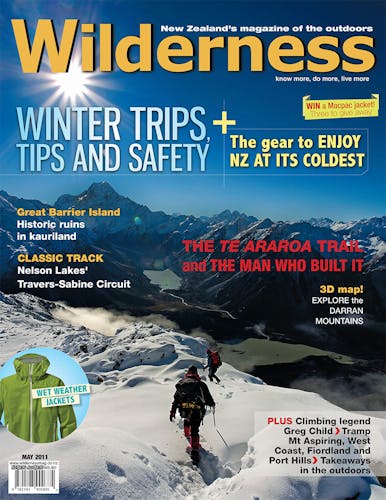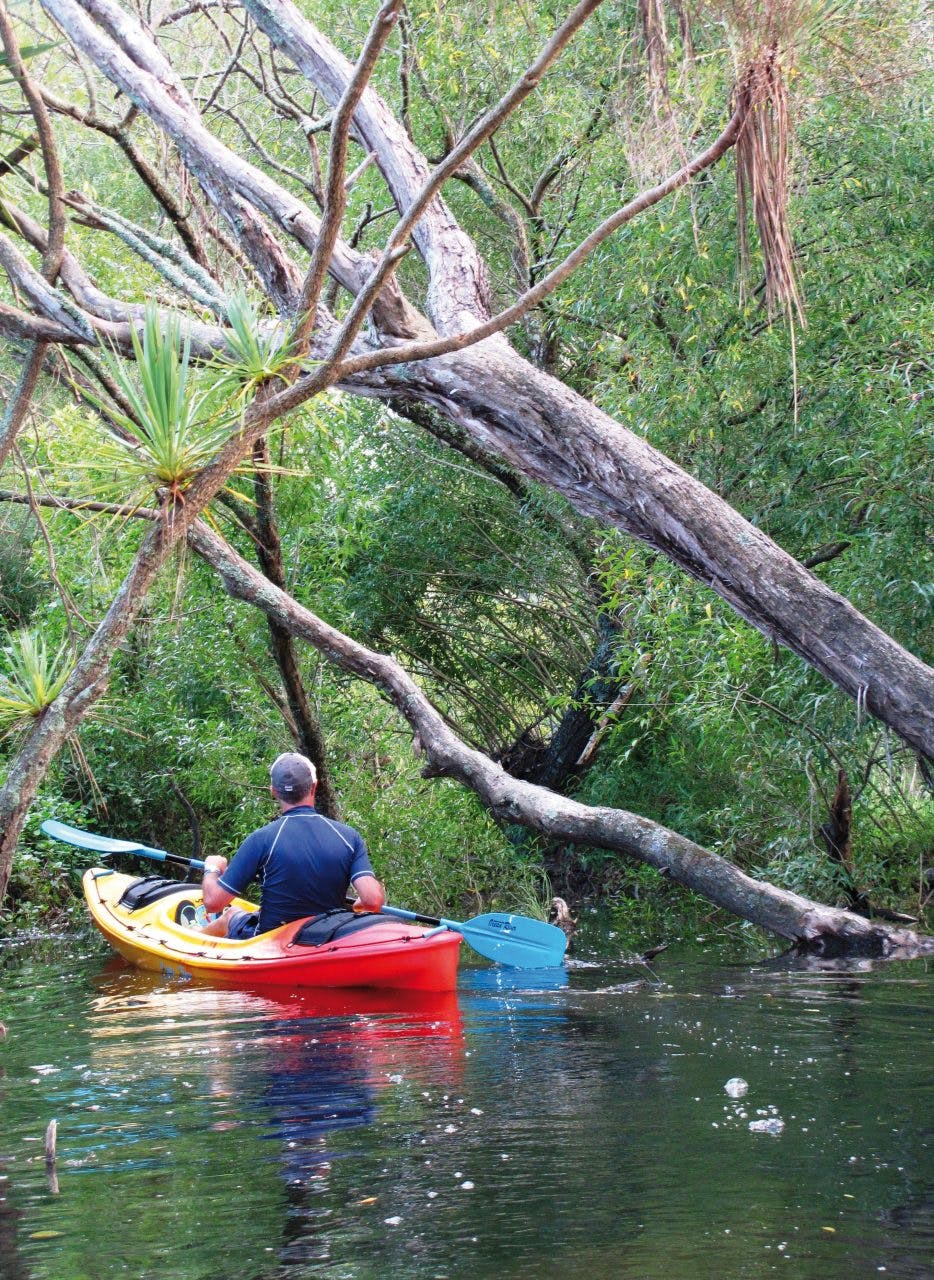- Time
- 1-4hr
- Grade
- Easy
- Access
- Forty-five minutes north of Tauranga turn right off SH2 onto Athenree Road and follow it for 2km. At the next junction turn right and continue to follow Athenree Road to the car park opposite the motor camp.
Waiau River Trail, Bay of Plenty
“Sometimes it’s so quiet, my ears ring,” says Kerry Snowden as we paddle the Waiau River, just 45-minutes drive north from my home in Tauranga. “It’s one of the Bay’s best-kept secrets; even the locals don’t seem to know about this place.”
In 2006, the Department of Conservation was gifted 22ha of low-lying Athenree grazing land, just outside of Waihi, for restoration to wetland salt marsh. But the Athenree lowland isn’t just for the protection of the Tauranga Harbour fringes and its bird life.
The Waiau River Trail weaves its way from mangrove to salt marsh to bushline on a fascinating half day kayak journey, (shorter or longer if you like) suitable for all ages and skill levels.
The journey can be as relaxing or intense as you like. For us, it was a pleasant paddle to look around and enjoy the morning; for others, it’s an early morning 2.5km sprint to the first bridge and back.
There are many kayak launch points on the estuary: the boat ramp opposite the Athenree motor camp, Beach Access 3 on Roretana Drive, or from the boat club at Bowentown. An incoming, almost full, tide is the best time to enjoy the paddle, with enough water to get easily up to the river shallows. Estuarine Waiau flows slow and broad past holiday homes at Athenree – the Ford of Kings – and follows the channel to its narrow upper reaches. At low tide at the river mouth it’s possible to walk from the beach access across the estuary to Bowentown and over the road to the surf beach in knee-deep water.
Locals have made a big effort to reduce the ever-invasive mangrove, but further upstream it creates a number of small waterways to explore, with access to kingfisher nesting sites in the clay banks and other bird life in the area – like the elusive fernbird heard ticking away in the scrub beside us.
The plant life, like the bird life, changes with the salinity of the water. Just 1km upstream, mangrove gives way to rush and flax, gum and poplar – and views of the northern Kaimai Ranges.
Remnants of the old stop bank bulldozed away to let water flow back across the farmland are easily seen where pukeko and white-faced heron stride out to hunt beside the river.
The river narrows just below the first bridge, but the flow rate remains unchanged. Mamaku and toe toe hang out from the riverbanks.
Further upstream, a recent storm littered the river with the trunks and branches of fallen trees easy enough to paddle over. Closer to the tall poplars of the old Stewart property (the original homestead has been carefully restored and is located near the main highway junction between Waihi and Katikati), the channel is increasingly difficult to navigate. Low branches test limbo skills and create low passageways and tunnels that make paddling impossible. Using your hands to pull yourself through is the only choice before the river opens out onto another stretch of clear water.
The riverbed is easily seen, and on a big tide the submerged leaves of water ferns are just below the surface.
It really is quiet up here. High in the poplars a gentle breeze rattles leaves; at water level it’s calm and still.
The fallen trees finally close out the river and further progress is impossible. Exiting on the true left of the river provides access to farmland and a portage of ten minutes or so to drop your kayak back in the water just below the second bridge three hundred metres upstream. The river passes through kiwifruit orchards for another fifteen minutes before the Waiau becomes an impassable, kayak-free stream.
Turning around, if you time the tides right, the current will carry you back downstream with minimal effort, and plenty of time to check out the surroundings.
– Paul King







